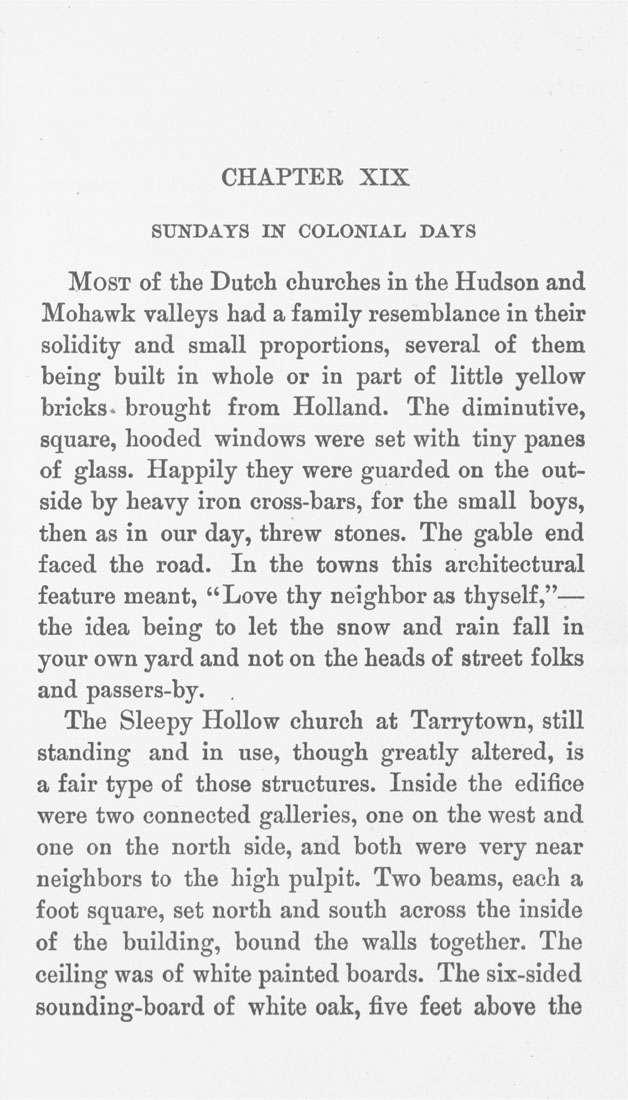CHAPTER XIX
SUNDAYS IN COLONIAL DAYS
Most of the Dutch churches in the Hudson and
Mohawk valleys had a family resemblance in their
solidity and small proportions, several of them
being built in whole or in part of little yellow
bricks* brought from Holland. The diminutive,
square, hooded windows were set with tiny panes
of glass. Happily they were guarded on the out¬
side by heavy iron cross-bars, for the small boys,
then as in our day, threw stones. The gable end
faced the road. In the towns this architectural
feature meant, "Love thy neighbor as thyself,"—
the idea being to let the snow and rain fall in
your own yard and not on the heads of street folks
and passers-by.
The Sleepy Hollow church at Tarrytown, still
standing and in use, though greatly altered, is
a fair type of those structures. Inside the edifice
were two connected galleries, one on the west and
one on the north side, and both were very near
neighbors to the high pulpit. Two beams, each a
foot square, set north and south across the inside
of the building, bound the walls together. The
ceiling was of white painted boards. The six-sided
sounding-board of white oak, five feet above the
|








